Looking at the gardens my studio designed over the past year, and talking to other designers and gardeners, 2023 saw a significant move towards environmental consciousness intertwined with an interest in encouraging people to be captivated by the joy, beauty and importance of the natural world. It's fair to say that 2024 looks set to continue along these paths. Considering the gardens at RHS Chelsea Flower Show 2024, and reflecting on our own projects, there are a few clear trends to expect in gardens this coming year.
Gardens are for all, and as designers prioritise people and the planet, there is much to be excited about.
- Here's gardeners to watch in 2024
- Don't miss our list of 22 people who will make waves in horticulture this year
- Here's gardeners and horticulturalists's New Year's Resolutions
10 gardening trends for 2024
The Open Air Sitting Room

‘Open air sitting rooms’ might sound like a modern idea, but the phrase was coined over a century ago by Octavia Hill, the social visionary and co-founder of the National Trust, that together with the Trust and Blue Diamond Garden centres, we are celebrating at RHS Chelsea in 2024.
Octavia believed that ‘the healthy gift of air and the joy of plants and flowers’ were vital in everyone’s life and in an era when the UK has lost more of its natural biodiversity than anywhere else in Western Europe, whether private, public or community garden, an open air sitting room plays a vital role in creating green, rejuvenating havens that support biodiversity. With environmentally conscious construction and pollinator attracting planting, open air sitting rooms offer a fresh perspective and appreciation for the environment. These sitting rooms provide nature rich havens where individuals can reconnect, reflect or spend quality time with loved ones surrounded with the beauty, and fragility, of nature.
Texture in hardscapes
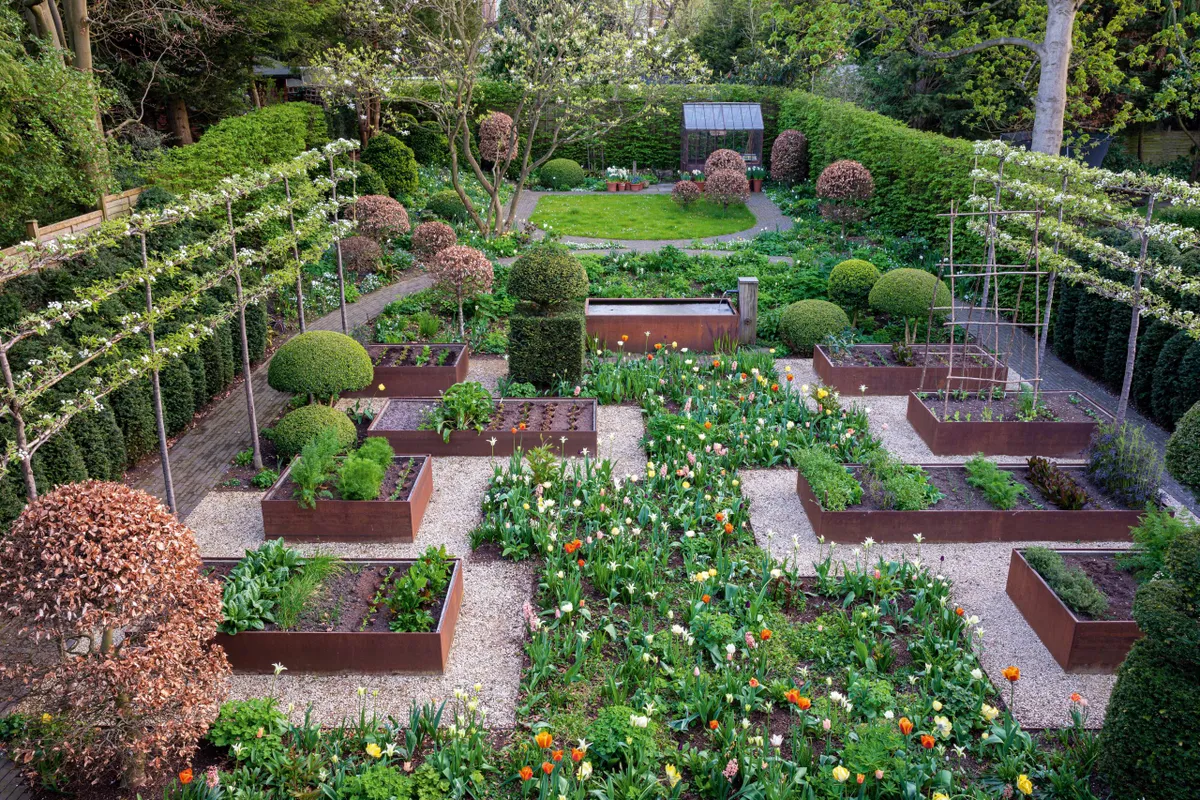
Garden material selections have been shifting for some time, with textured surfaces replacing the stark uniformity of sawn, smooth paving, rendered walls and percision stainless steel. From characterful timber, textured renders to riven paved stones, through terracotta, ceramic or encaustic tiles, designers are specifying pattern, contrast and depth into their schemes. Celebrating nature and traditional English craftsmanship, texture can be carved, tooled or mixed over large areas or inviting sections which one wants to reach out and touch. Whether rough, grainy or smooth, by paying attention to textured details, gardens become unique, appealing and elevated.
Xeriscaping

As scientists confirm that 2023 was the hottest year on record, last year the UK experienced scorching heatwaves, water shortages, and devastating floods. But by selecting drought resistant plants, able to withstand changing climates, planting can help mitigate the effects of climate change and gardens can be adapted to thrive. Xeriscaping focuses on creating landscapes that reduce or eliminate the need for irrigation. Already a huge trend in the US, it’s a logical principle that has taken root here in the UK. Nurseries are exploring and cultivating plant species originating from warmer climates which may be new to British gardeners, but these plants encourage gardeners to broaden their horizons and create stunning displays that are sustainable, resilient, low maintenance and will be aesthetically pleasing long into the future.
Sand gardens
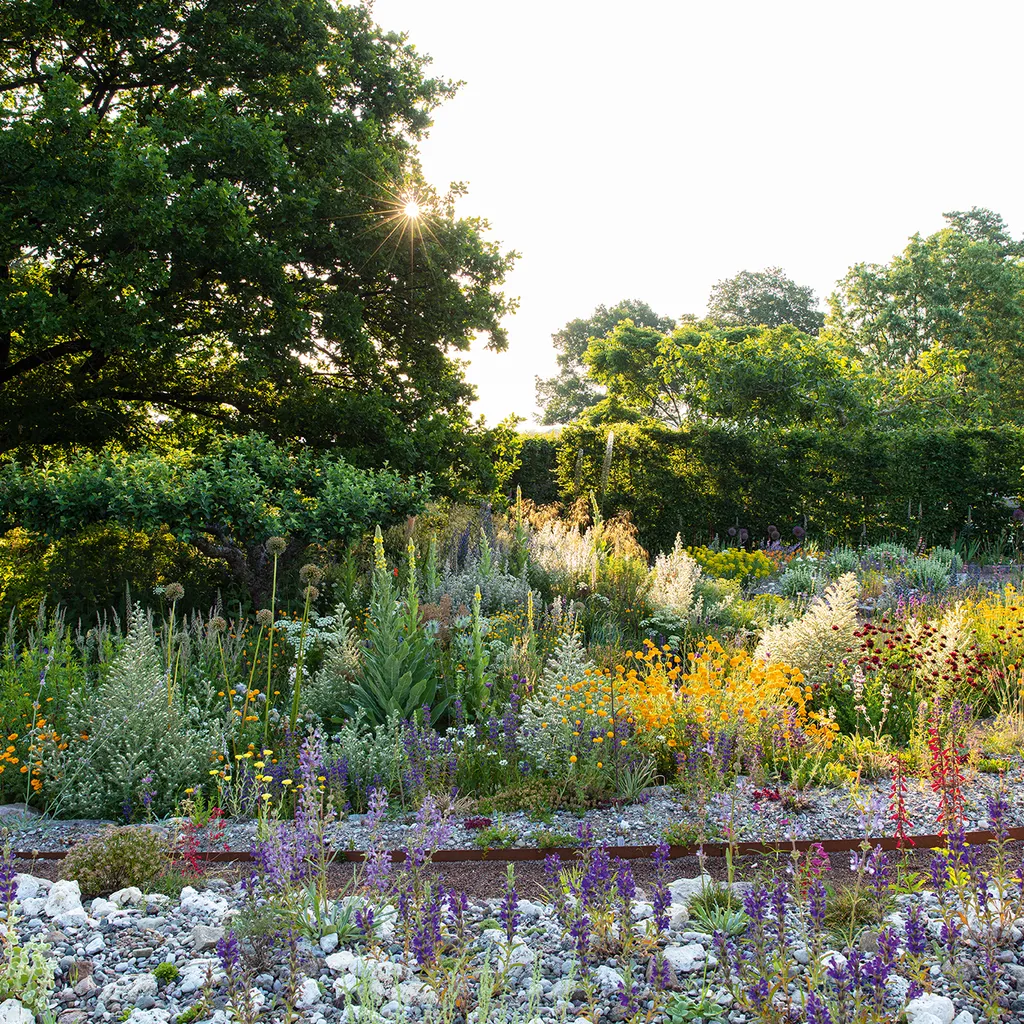
Gardening in sand alone may sound radical, but it’s an idea that is gaining momentum as an innovative method with numerous benefits. Plants grown in poorer soils tend to be more delicate in stature so requiring less staking, they are sturdier, stockier too, showing resilience, and when we know constant winter rain can be as dangerous to popular perennials such as Achillea, Salvia and Verbascum, with the longer tap roots sand growing promotes, the brilliant draining qualities of sand allows for better chances of winter survival.
Advocated by leading gardener plantsman such as John Little, Peter Korn, James Hitchmough, Nigel Dunnett, Charlie Harpur and Jimi Blake, the value of this type of gardening cannot be ignored in our changing climate, particularly in public spaces and in new developments. The waste produced in large-scale building projects can be crushed and designed back into a garden scheme, stopping it from going to landfill, the topsoiled areas developed for hungrier plants, the rubble, sand and gravel allowing an alternative topography and growing conditions for a large range of plant species diversity, and so a huge larder for insects to feast upon.
Inspiring isn’t it? But it’s sensible too, and I’m sure that RHS Chelsea 2024 will undoubtably further showcase this trend seen on both Sarah Price and Tom Massey’s gardens last year.
Good Life Gardening
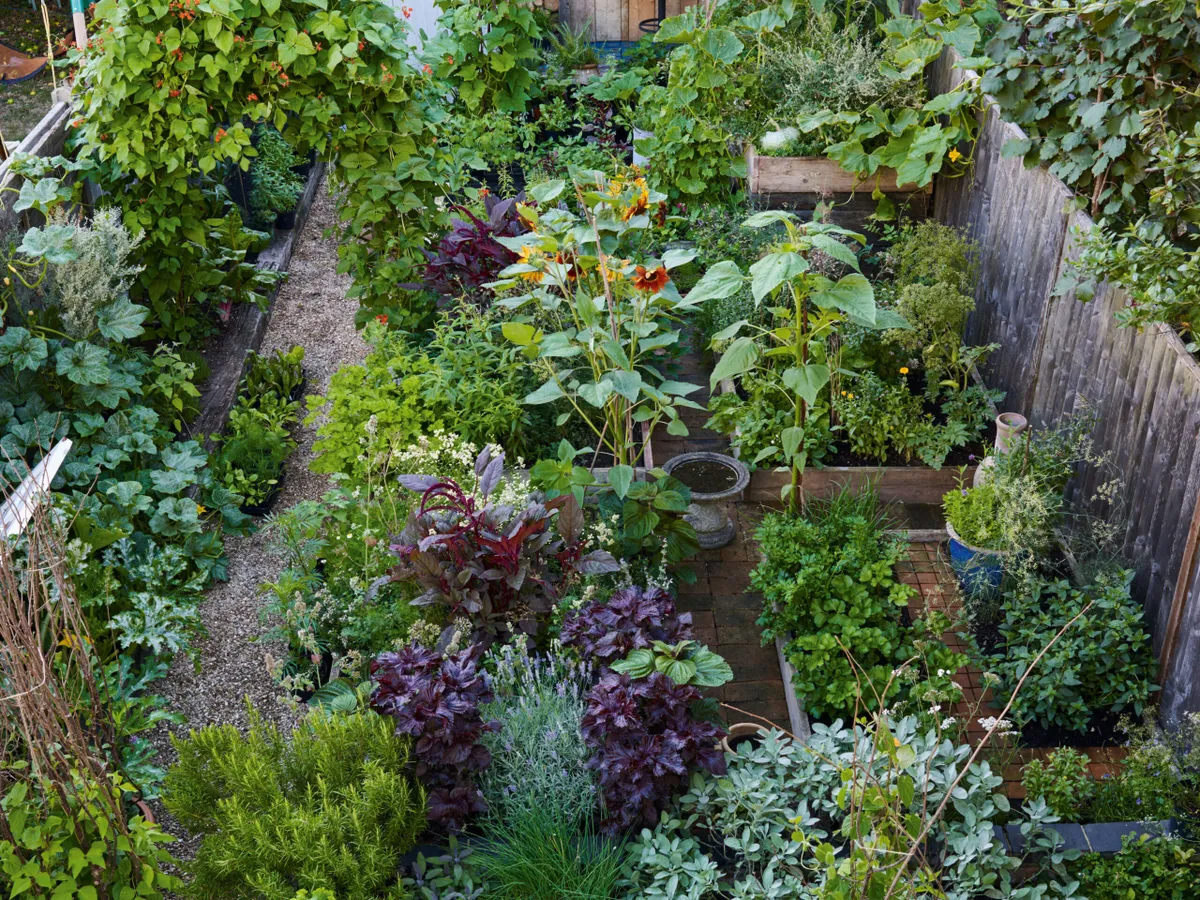
The trend towards living a simpler, more wholesome lifestyle continues to grow. People are finding satisfaction in growing their own food, keeping livestock such as chickens or bees, and embracing a degree of self-sufficiency. Garden design studios are delighted to accommodate the hands-on design requests from clients who seek a closer connection with the food they consume as many turn to a plant-based diet or are rejecting unsustainable food practices. The result is cutting gardens, polytunnels, greenhouses, gardeners paths in border, compost areas including hotbeds, pot stores, sheds and herb gardens where gardening and the gardener is designed into the scheme. All this allows a more self-reliant, sustainable, productive way to enjoy the benefits of spending time outside, close to the earth, tending the gardens. Yes, gardens are no longer places to look at, they’re places to live in, and you can have a piece of the good life, support the delicate chains of the natural order whether you have a couple of acres or a few pots by the door, on the balcony or the windowsill. I guarantee if you grow veg, or ‘edimentals’ (ornamental edibles) you too will be rewarded with homegrown produce that tastes infinitely better than anything you’ll ever buy from the supermarket.
Environmentally Conscious

Natural ponds, swimming pool and water features are increasingly popular due to the wildlife and planting opportunities they provide, but as the speed of climate change challenges increases, considering water usage in gardens is crucial. Sustainable garden design involves incorporating rain borders, SUDS compliant materials, natural water runoff systems, water collection methods such as water butts. Environmentally friendly cultivation practices like mulching with homemade compost or the ‘chop and drop’ mulch method in spring where the dead top growth of plants is cut back and strewn straight onto the soil, ditching chemical pesticides and fertilisers, and of course, choosing reliable plants that require less water whilst attracting pollinators and birds, are all hugely beneficial.
By making these choices, designers and gardeners can give back to the environment while also creating beautiful outdoor spaces. Who would have thought that gardening might help change the world?
The importance of sustainability is reflected in the gardens showcased at RHS Chelsea 2024, all of which are subject to a ‘green’ audit by the RHS as part of the selection process, and many of which address challenges such as appropriate plant selection, flooding, sustainable material sourcing, and reducing single-use plastics, and cement within the supply chain.
Warm, comfortable material tones
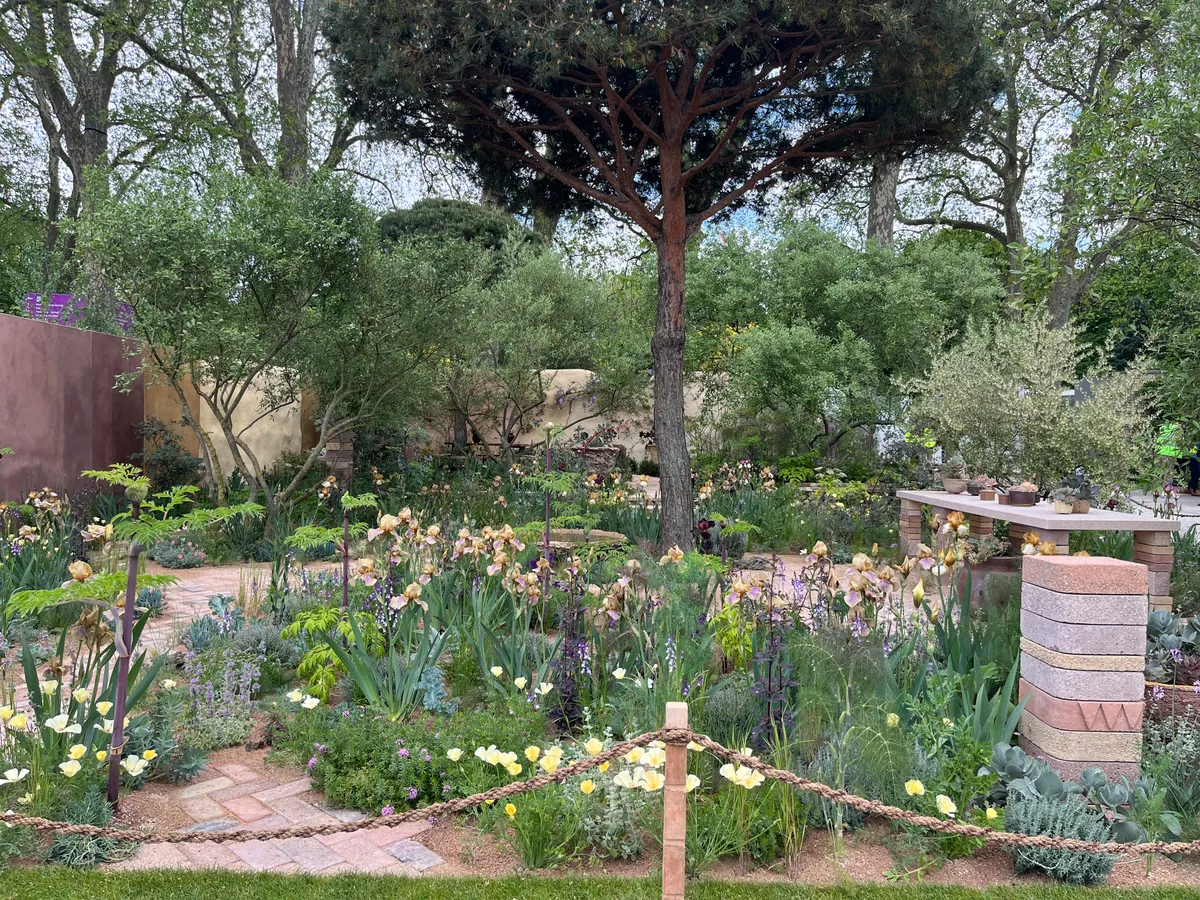
There’s been a clear departure from clean whites, cold steel and uniform greys, contemporary garden design now embraces warm shades and heritage materials that create a sense of familiarity and warmth. By incorporating tones of terracotta, rust, oatmeal, hazel, and biscuit in hardscape selections, designers can create a serene atmosphere that complements the deep greens of plant foliage, and the tones favoured by architects and interior designers. Adding accents of bronze, copper, or Corten in furniture, accessories, sculpture, or boundary treatments further enhances the inviting ambience. Dusty black accessories and charred timber details bring dimension and presence to the overall hardscape palette.
Linking design and ecology
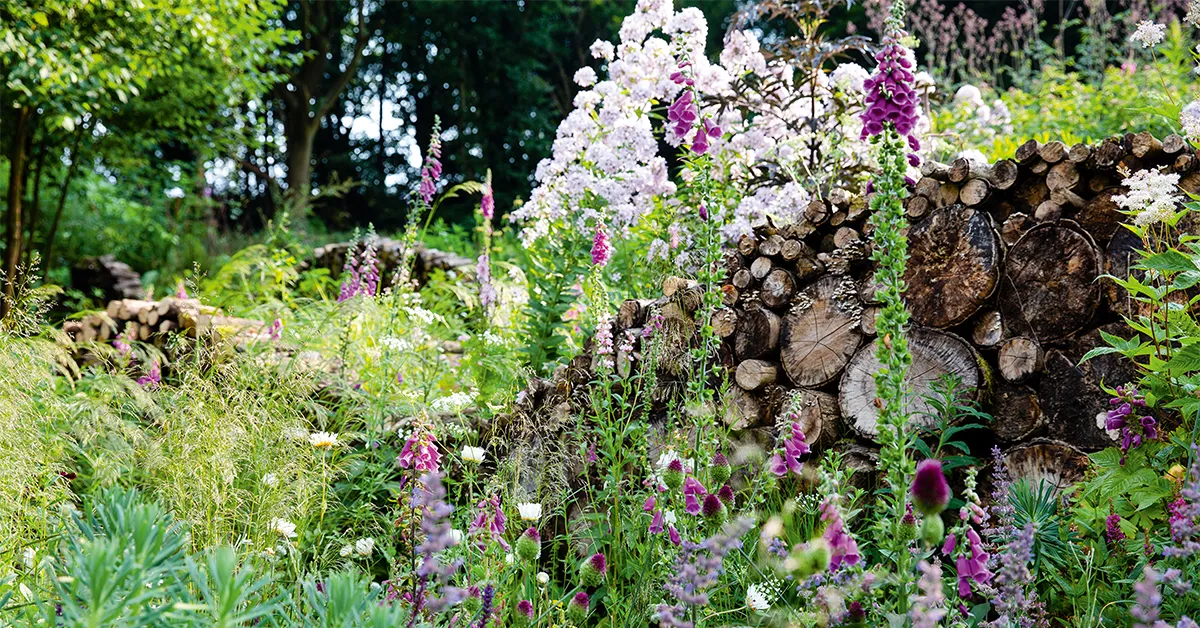
Designers are in a unique position to help people connect with nature's processes. Increasing awareness of the ecological impacts of our decisions has led to discussions, often instigated by our clients, about soil health and environmental stewardship. Clients are seeking wilder, less manicured looks that embrace planting for wildlife habitat and reduce the need for constant maintenance. Sustainable gardens with a mix of native and non-native plants to increase biodiversity, perennial wildflower meadows, native hedging, and nectar-rich planting are definitely gaining popularity on client wish lists. Clients want sustainable gardens which are vital and have an energy not found in the more traditionally decorated outdoor space with its ordered borders, neat topper and perfectly striped lawn.
We’re delighted to be designing gardens complete with composting areas, log stacks utilising on-site store fallen timber, nectar rich, loose vibrant planting amounting to natural green oases where clients can immerse themselves in nature. I believe this shift towards a more ecologically responsible, natural approach reflects a deeper appreciation, and a respect for the joy of gardening, which I’m sure you find as thrilling as I.
Repurposing or reusing materials
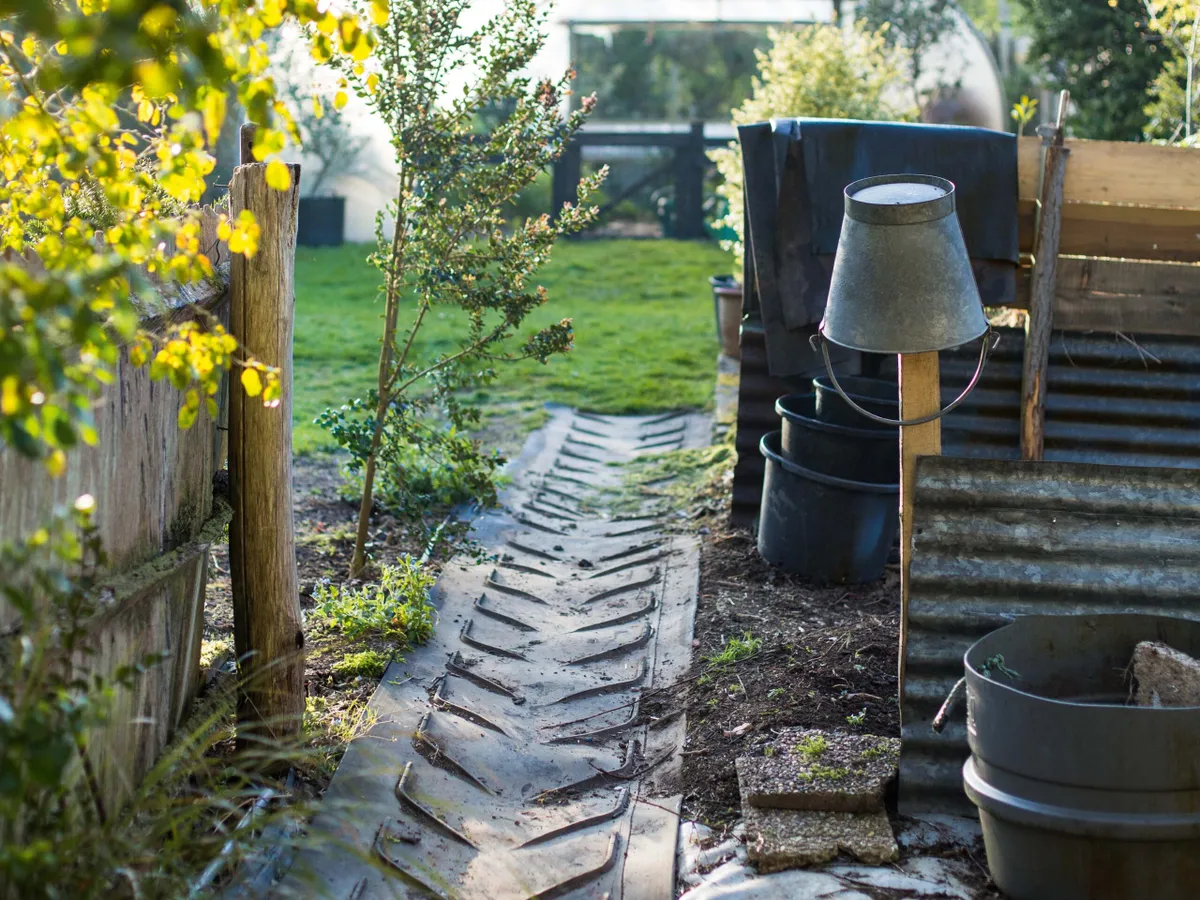
We may live in a throw-away society, but in a bid to minimise waste, I’ve noticed designers (including our own practice!) are respecting a garden’s existing hardscape elements and repurposing or reusing materials whenever possible. Where this isn’t possible, local natural materials with a reduced-carbon footprint are being selected, and thoughtful layout and construction detailing ensures that these hardscapes stand the test of time and are built to last.
If paved areas have deteriorated to such a point where crushing is the only option, these will be used as sub-bases for new stone, used as informal paths, or as a planting substrate where they old materials can be laid to rest adorned by bountiful, colourful self-seeders.
Bold, Joyful Planting Schemes
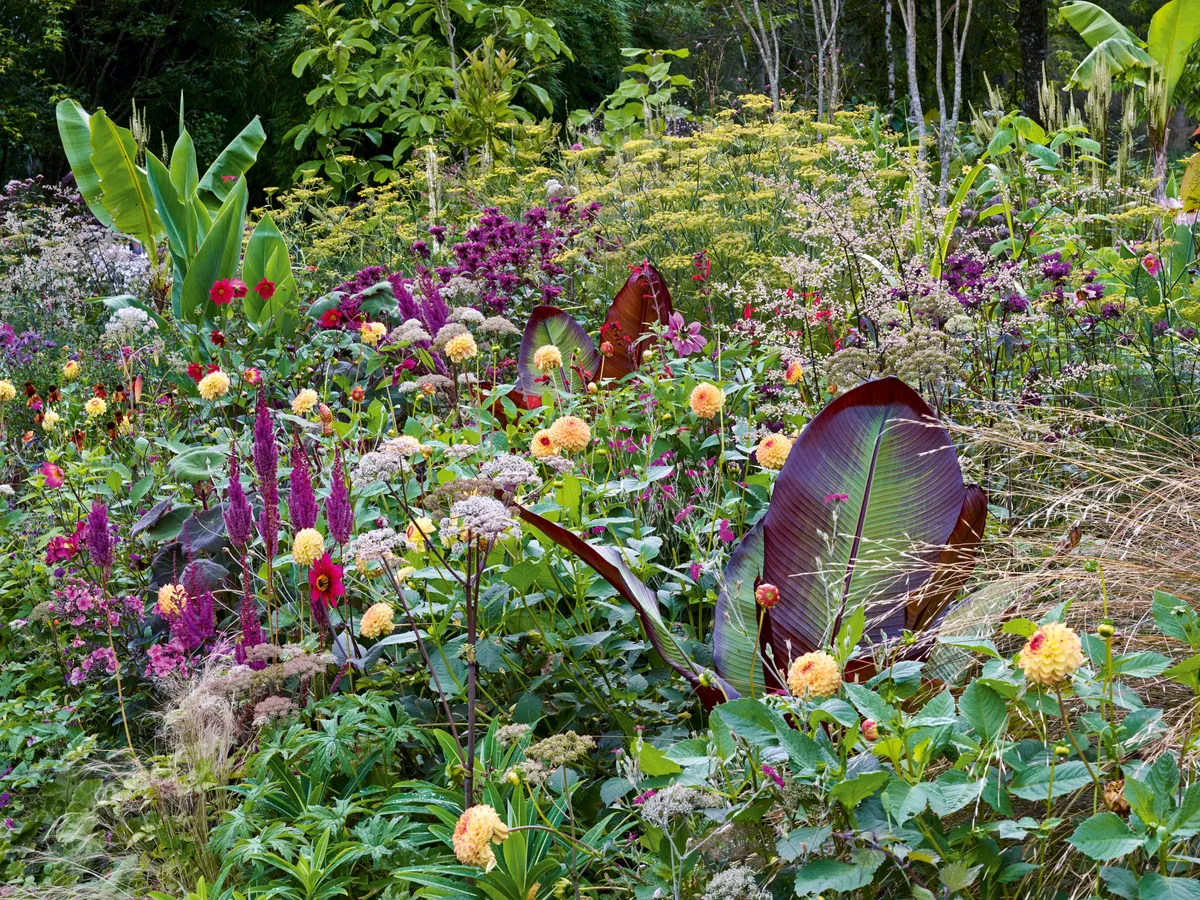
Bold and joyful colours are essential elements in all our planting designs, which is happily one of the top requests when discussing planting styles with out clients. Inspired by the vibrant colour combinations mother nature herself combines, often on a single bloom, our studio encourages keen gardeners to stitch plants together, considering also the intricacies of shape and form, to create unique tapestries of bloom and foliage. Next year at RHS Chelsea, expect to see rich tones of maroon, chartreuse, and burnt orange making an appearance in our plant palette for our ‘Octavia Hill Garden for Blue Diamond with the National Trust’. These velvety, dynamic tones will be underpinned by bold bulb selections, adding floral uplift and joie de vivre to our Chelsea borders. Our goal is to create inviting, welcoming yet exciting spaces that encourage people to revisit and immerse themselves in the beauty of nature to bring joy throughout the seasons. What could be better than that!
Discover more about Ann-Marie's projects



